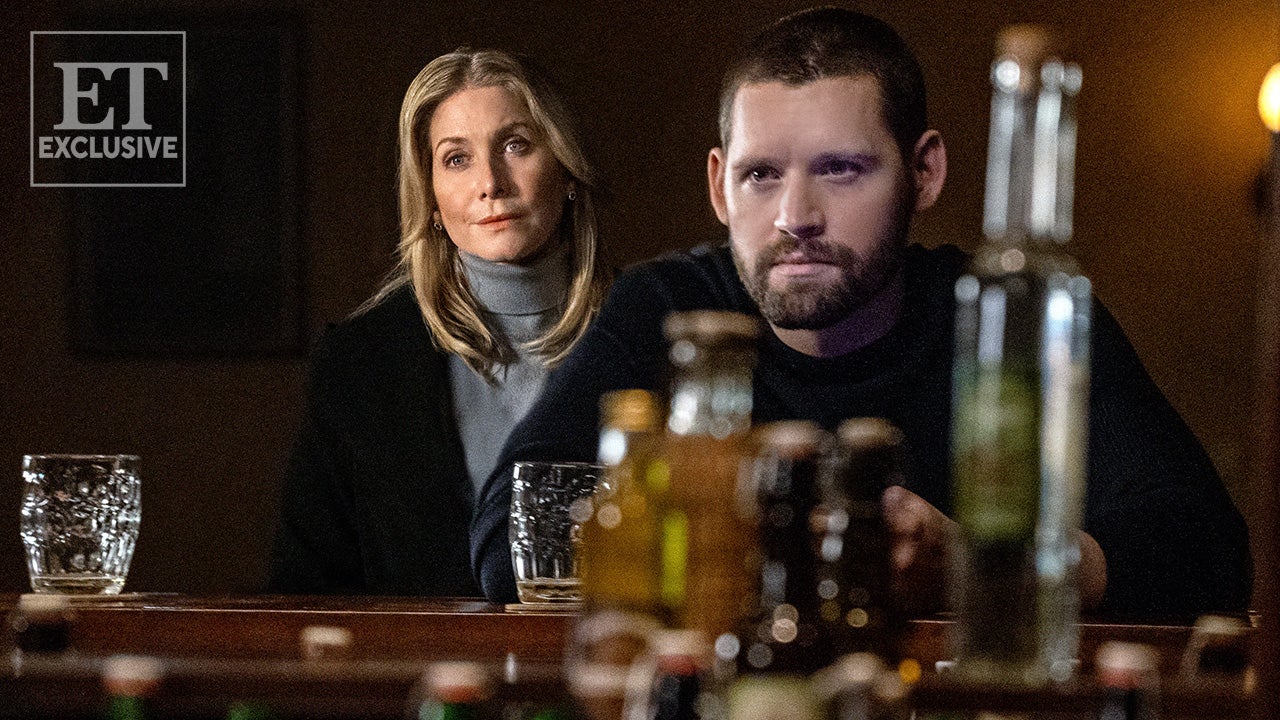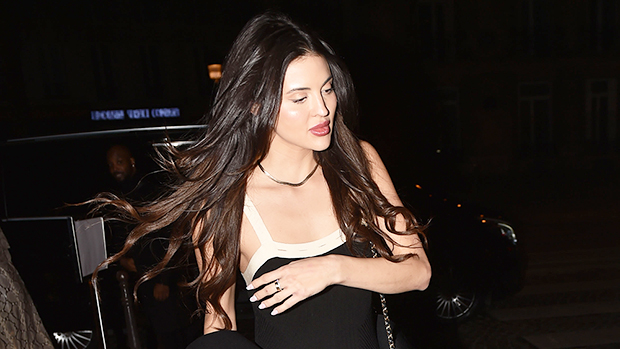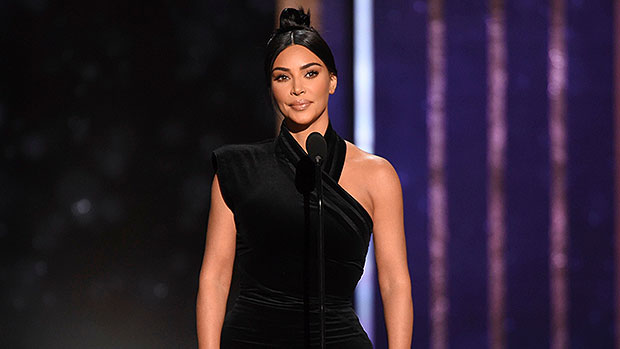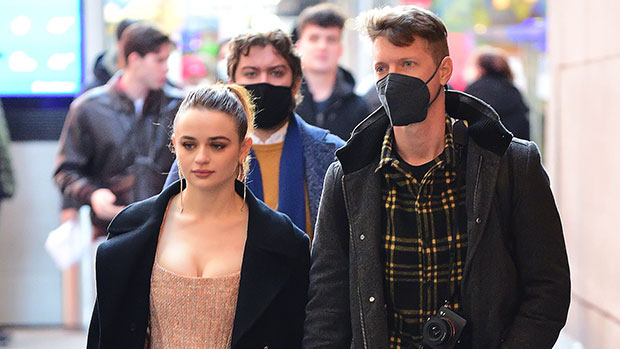Hot Docs 2022 Women Directors: Meet Lina Rodriguez – “Mis Dos Voces” (“My Two Voices”)
Colombian/Canadian filmmaker Lina Rodriguez is the writer-director of narrative features “Señoritas” and “This Time Tomorrow,” which have been showcased in festivals and cultural venues including TIFF, Locarno, and the Mar del Plata International Film Festival. Her credits also include...

Colombian/Canadian filmmaker Lina Rodriguez is the writer-director of narrative features “Señoritas” and “This Time Tomorrow,” which have been showcased in festivals and cultural venues including TIFF, Locarno, and the Mar del Plata International Film Festival. Her credits also include documentary shorts “Ante Mis Ojos” and “Aquí y allá.” Rodriguez is currently in post-production on her fourth feature film, “So Much Tenderness.”
“Mis Dos Voces” (“My Two Voices”) is screening at the 2022 Hot Docs Canadian International Film Festival, which is taking place April 28-May 8. Find more information on the fest’s website.
W&H: Describe the film for us in your own words.
LR: I’m not sure that my words are just mine given that we are connected to each other, I come from somewhere, from the people before me. The way I combine words to create meaning is perhaps mine. I am constantly learning how to speak. Also you are asking me to answer in English, my second language. Nevertheless, I will share the film’s synopsis in English, which I wrote: The film is a poetic reflection on the fluid nature of identity that focuses on Ana, Claudia, and Marinela, three Latin American women who share their intimate experiences of immigrating to Canada while reflecting on themes of violence, belonging, motherhood, and reconciliation.
W&H: What drew you to this story?
LR: After meeting Claudia — who works as a settlement worker with the immigrant community in Toronto — I was so inspired by her incredible leadership that I wanted to make a film to celebrate her and the work she does as a community weaver. I approached her with the idea of making a film together, and asked her to introduce me to other Latin American women whose immigration journeys she had supported. She introduced me to Ana and Marinela. After several months of chatting with them, I decided to focus the film on all three women, and make it a sort of triptych portrait. I focused on developing connections with them, spending time with their families, sharing stories, and visiting their respective homes.
As an immigrant myself, I made this film as a way to articulate the coexistence of the multiple places, times, and identities that are part of our journeys as immigrants, always walking on shaky ground.
W&H: What do you want people to think about after they watch the film?
LR: Given the very methodology and formal approach of the film as well as my interest in filmmaking as a process of discovery, I cannot answer this question. Throughout the process of making the film, I intentionally did not want to put myself or anyone in the position of the “knower,” which I find a problematic perpetuation of patriarchal structures that expect directors to be the inventors, creators and controllers, to extract something from people and places, as well as tell others — actors, collaborators, audiences — how to feel and think.
Part of my task making this film was to find ways to portray the complexities of these three incredibly inspiring women. As I spent time with them after they generously opened their homes to me, it became clear that it was impossible for me to define them or “tell their stories.” It was then that I decided to focus on the very cadence of their voices, on their gestures, and on the objects, textures, and sounds of their everyday lives as a strategy to trace their respective biographies and journeys.
Inspired by [Vietnamese filmmaker and literary theorist] Trinh T. Minh-ha’s invitation to “speak nearby,” instead of speaking about, I sought to work with a delicate touch, without grabbing, capturing, or enclosing. My aim was to create an impressionistic tapestry that resists a centralized perspective and echoes Ana, Marinela, and Claudia’s fragmented and hybrid identities. The film invites the audience to engage in this way, to accept that we cannot “know” or “consume” identities and stories and draw specific and clear conclusions.
W&H: What was the biggest challenge in making the film?
LR: I produced this film with Brad Deane, my partner in life and cinema. For us, what a film is about is intrinsically connected to the way it is made, which is why it is very important for us to pay attention to every detail of production and make very conscious decisions about the kind of atmosphere we want to create for each film. We firmly believe in the importance of resisting industrial practices through mindful collaborations around the camera that emphasize respect and care, so that we can all learn from each other.
For this film, we knew since the beginning that we wanted to work with a small team in an intimate manner. Although there always are challenges such as weather or schedule or equipment related emergencies, the process of making the film was a wonderful and enriching experience.
W&H: How did you get your film funded? Share some insights into how you got the film made.
LR: The film was made with the generous support from the Canada Council for the Arts, the Toronto Arts Council, as well as by [former executive director and COO of TIFF] Michèle Maheux, who received the Technicolor Clyde Gilmour award for service to Canadian cinema in 2019 from the Toronto Film Critics Association, and named me as the recipient of post-production services, which I used for this film.
W&H: What inspired you to become a filmmaker?
LR: I was born and raised in Bogotá, Colombia. Throughout my childhood and adolescence, I felt like an outsider. My mother said that it was part of the anxiety of being a teenager, and that it would pass. It did not. I found cinema when I moved from Bogotá to Toronto to study film production. It was an incredible thing. After all these years of feeling lost, I finally felt that I had a space of my own. Even if I continue to feel out of place, cinema has given me a platform to face the world and question it through my perspective. Since then, I have been developing my own voice, in my own way and at my own rhythm.
W&H: What’s the best and worst advice you’ve received?
LR: Worst advice: As a director you have to know everything and be the boss. You must know all the answers.
The best is a quote from Picasso: “I do not seek, I find.”
W&H: What advice do you have for other women directors?
LR: Filmmaking is a journey, a process of discovery that constantly asks us to learn and unlearn. Even if it can be scary, you can invent your own way of directing, your own way of making films, your own production model. You don’t have to follow the way “it’s done in the industry”. Rather than mimicking formulaic structures and methodologies, invent new ones that work for you because no formula applies to all films.
Make sure to surround yourself with collaborators who see you, make sure you see them. Given that filmmaking is a human activity, try to carve a space so you and your team can encounter each other, this way everyone can take something from the experience as well as leave something behind.
W&H: Name your favorite woman-directed film and why.
LR: I don’t love this question about picking a favorite film, as it implies a sort of fixed point in space and time. Given that I am in a constant oscillation from feeling located and dislocated — emotionally, geographically, physically — and that I am always changing, learning, and unlearning, I connect to different films at different times in different ways.
A film that has accompanied me for a while is Lucrecia Martel’s “La Ciénaga.” I connect to it because it is not concerned with telling us what to feel when, who to trust, or who to follow; instead, it uses sound, framing, and editing to create a lack of order. The film is populated by on and off-screen sounds and micro-events that dislocate us, yet somehow provide a moving impression of the bewildering experience of living and being. “La Ciénaga” reminds me that “reality” is not singular, solid, or organized: it’s chaotic and has endless gaps.
W&H: How are you adjusting to life during the COVID-19 pandemic? Are you keeping creative, and if so, how?
LR: Part of my interest in filmmaking has always been to pay attention to the seemingly unimportant things — domestic spaces, gestures, glances, textures, body language, the objects in our houses, the sounds in our neighborhoods — and reflect on how these details can speak the unspeakable. They can reveal a lot about our inner lives. Given that during the pandemic things seemed to quiet down, I tried to continue to cultivate my interest to observe and listen, to make this attitude of openness and curiosity a way of living as much as possible, and to do it with a certain tenderness, to be present and celebrate each moment, to remember to be grateful.
Given that filmmaking is my way of processing the world, I am grateful that I was able to continue working and thinking. During the first year I finished “Mis Dos Voces” and started pre-production of a new feature called “So Much Tenderness,” which we shot last year and will be releasing this year. I also made three short films that are part of a correspondence with Colombian-Canadian artist and filmmaker Jorge Lozano, which were all commissioned by Cinema Public in Montreal. I also was hired to write a pilot for a TV series, which is still in development, and started development on two feature films, one of which I will make with my mother, and another which I’m co-writing and will be co-directing with Brad.
W&H: The film industry has a long history of underrepresenting people of color onscreen and behind the scenes and reinforcing — and creating — negative stereotypes. What actions do you think need to be taken to make Hollywood and/or the doc world more inclusive?
LR: Although I understand what you mean when you say Hollywood, I looked it up in the dictionary because I am interested in “definitions.” Britannica.com says, “it’s a district within the city of Los Angeles, whose name is synonymous with the American film industry.” A synonym is to be a word, morpheme, or phrase that means exactly or nearly the same as another word. Perhaps that is part of where the issue is, that we not only think of Hollywood as “the American film industry”, but as “the film industry”.
Indeed, there’s a history to why this is the case, why and how Hollywood has been placed at the center of it all, and how this placement has in part enabled the erasure and disfiguration of entire cultures and histories on screen. So yes, there’s definitely a lot to re-frame for those in power positions making decisions — in Hollywood and elsewhere — based on patriarchal, colonial, and capitalist frameworks that center and value certain perspectives and marginalize others. This involves those who get to decide what to fund and why, what to distribute where and how, what to program at either festivals or cultural institutions, and what films to cover and how to engage with the films and the filmmakers — the specificity of the questions asked, the space given, etc..
Given that change is a community effort, I also feel it’s important to think about how each of us, from our different positions, all with limitations, can also challenge the standard modes and re-frame how we do what we do. For me this has to do with re-engaging with care as a political theory, an ethic and a political praxis so I can find new ways of living, relating, and making films. That is why Brad and I try to use our sets as spaces of mentorship, generosity and reciprocity. We also try to strategically combine experience levels, cultural and ethnic backgrounds, and gender identities and expressions so we can weave new and inspiring connections and learn from each other, as well as contribute to further develop skills within the Latinx and immigrant communities, so we can see more and more diverse teams in future projects.
At times it seems that those in power, as well as audiences and media, think that a new formula of diversity is to have the same superhero stories with diverse voices in front and behind the camera, using extractivist production models and telling the same authoritative colonial narratives about winners and losers that can be later sold on the red carpet or in the meta universe. Of course, it is important to have more diversity behind and in front of the camera, but hopefully we can also find ways to instill a much deeper curiosity and more sensitive awareness towards diverse cultural and aesthetic frameworks and ways of seeing and caring for each other so we can work together respectfully.

 Troov
Troov 
































